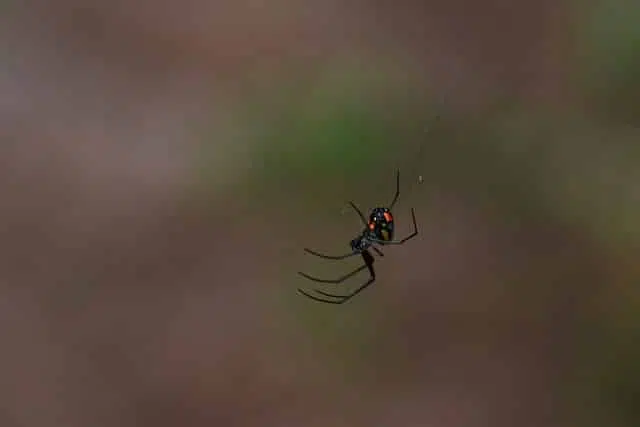Are you wondering Where to see a Black Widow Spider? The population of invertebrates and their species is far bigger than the animals’ world.
Unlike animal species, they can hide easily due to their tiny size (usually) when they sense danger. The black widow spider is one of the most interesting and intelligent kinds of spider species.
Like any other species, you cannot find these spiders anywhere other than their habitat. Likewise, we will discuss the kinds of black widow spider species from all around the globe.
Here we will discuss Where to see Black Widow spiders and their facts and characteristics.
What Is A Black Widow Spider?
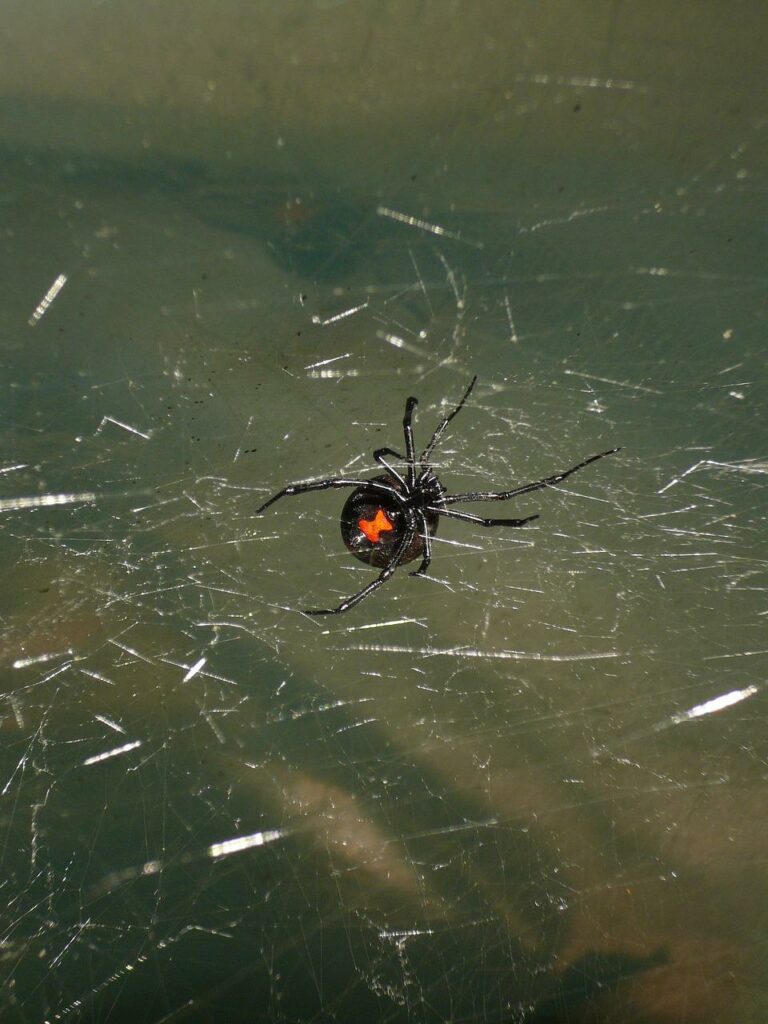
Amongst the few spider species with venom is the Black Widow Spider. It is a fellow of the arachnid family, including mites and scorpions. They are deadly arachnids with an eight-jointed body, an external skeleton, and segmented body parts.
Looking at these tiny invertebrates can give anyone goosebumps as despite having tiny size, they look suspicious. Black widow spiders create their webs using a silk-like substance, their webs usually have a very tangled appearance.
Their web is also stronger than regular spiders’ web and once a prey gets caught, there will be no escape. These webs are generally found close to the ground in enclosed or dark areas, such as next to drain pipes or under logs.
The lethal toxin of a black widow spider is 15 times more intoxicating than a rattlesnake’s venom.
1. The Origin Of Name “Widow Spider”
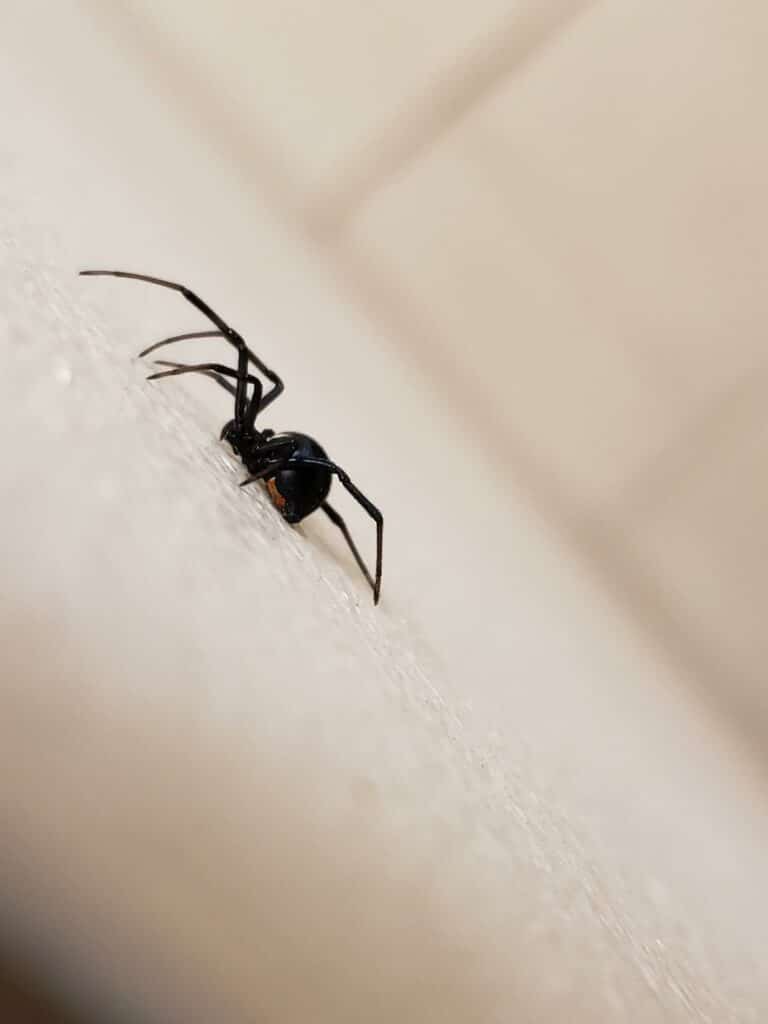
The female’s custom of consuming the male after mating gives rise to the term “black widow.” The male is around half as big in size as the female.
Scientists observed black widow females eating their mates after copulation, which is how the species got its name.
Experts believe that black widow spiders have comparable rates of cannibalism in the wild since the females only devour their partners around 2% of the time.
2. Black Widow Spider Appearance
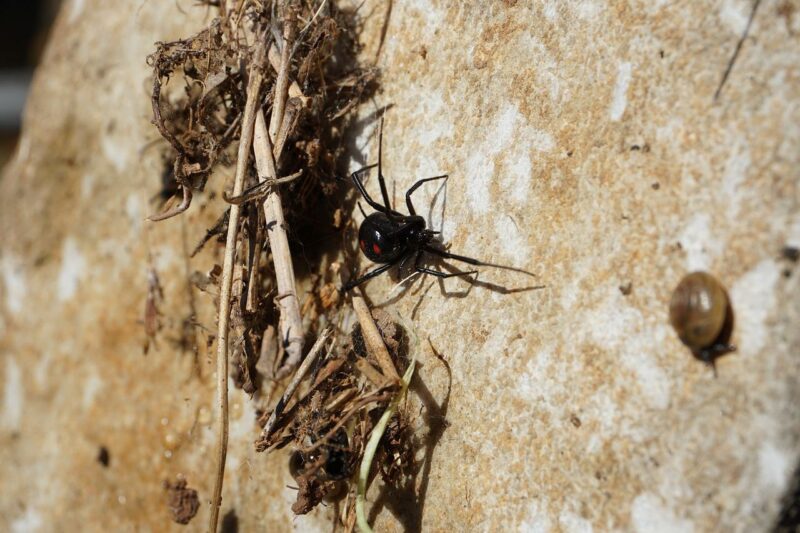
The female spiders of all black widows are the most recognizable due to their shiny black bodies and red markings on the underside of their elongated abdomens.
On the other hand, the males are paler in color and have smaller abdomens that occasionally have red or pink markings. Male black widows are normally roughly half as big as females, with females having a body length of up to 0.5 inches.
3. Black Widow Spider Diet
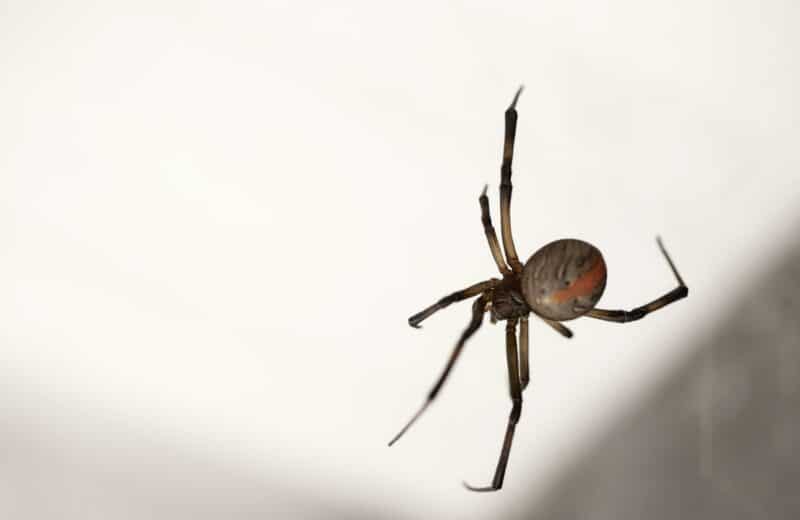
Insects and other spiders entangled in their webs are eaten by black widows. Digestive enzymes are delivered to the prey once captured on the web. They digest their meal outside their bodies, and once the prey has liquefied and softened, they eat it.
Like many other spider species, the black widow spider may survive for several months without eating. Some species have lived for almost a year in the lack of prey.
4. Black Widow Spider Venom
The venom of a black widow is hazardous enough to cause severe infection if they bite a human or animal. Contrary to popular opinion, most persons who are bitten do not experience significant harm, it more or less passes away.
These spiders are not hostile, though, and only bite in self-protection, such as when someone unintentionally sits on them.
So, if you have observed a black widow spider in your surroundings, keep checking the bed, chairs, or couch if they are placed in the dark.
5. Black Widow Mating
When a male spider is ready to mate, he begins by spinning silk, which he soaks in sperm and wraps around palps close to his head. When they reappear in the spring, the complicated process of mating starts.
Unlike regular invertebrates and animals, black widow spiders transfer their sperm in the female’s reproductive system harshly. The female produces papery egg sacs following the mating phase that could contain hundreds of eggs and hatch after around 30 days.
Where To See Black Widow Spider Species?
The world’s mild regions, including North America, southern Europe, Asia, Australia, Africa, and a large portion of South America, are home to black widow spiders. When talking about the US, they can be found all over the state except for Alaska and southern Canada.
These spiders like isolated, dark spaces like wood piles and cracks. However, black widows frequently establish their homes close to residential areas, spinning their webs in dim areas inside and outside structures.
1. Northern Black Widow Spider
It is one of the most hazardous invertebrates in the world. They seem to be more prevailing in the western territories of Michigan. They can be found in dark and silent places and frequently enter homes when firewood is brought inside a building.
They like dark, dry sheltering locations to create their homes, and you can find them in dark places.
2. Southern Black Widow Spider
Black widows are more prevalent in the Southern part of America because of the local temperature and topography. It is one of the most fatal species found in Southeast United.
The Southern Black Widow is a spider species native to the Southeast of the United States but has also been discovered as far north as Ohio and west as Texas.
Types Of Black Widow Spider
“Black widow” refers to three venomous North American spider species. There are three species of spiders of black widows. These three species are remarkably similar in terms of both appearance and behavior.
- Latrodectus Macatans is one of the black spider species that is found in eastern areas of the US.
- Another one is Latrodectus Hesperus, who lives in the western territories of America.
- The third one is Latrodectus Variolus lives in the northern territories of the US.
1. Latrodectus Macatans
The deadly black widow spider, Latrodectus mactans, can be found all over Southeast America. Because after copulation, these spiders would kill and swallow their mate.
However, the majority of the instances of the behavior were found in cramped lab settings.
The female’s desire to consume the male is thought to be less of a factor in sexual cannibalism among the widow species in natural settings than the male’s physical inability to flee.
- The mactans hold an extremely strong venom in their bodies which causes severe infection if they bite a human.
- The Latrodectus mactans inhabit a terrestrial environment.
- When it does seek shelter inside a structure, it does so because of the cold and a desire for a dry place to stay.
2. Latrodectus Hesperus
It is said that possibly the most well-known venomous spider in the world is Latrodectus Hesperus. Although both are venomous, only the female can envenomate humans.
A modified first appendage of the head serves as the Black Widow’s venom delivery system. Although both are venomous, only the female can envenomate humans. The female is rough, twice as big as the male.
- The black male widows stalk the area looking for a female, and they do not bite or eat at this stage until they come across a female for mating.
- A black male widow weaves a little web before depositing a sperm-drop on the silk or web.
- The female of this lustrous, coal-black spider measures 8 to 10 mm in length, and has long, slender legs, and an abdomen that is rounded.
3. Latrodectus Variolus
The eastern US is home to the Latrodectus Variolus Spider. The venom of this spider is extremely toxic, which means that it prevents the transmission of neural instincts even though it is not aggressive and does not have the urge to bite.
The black widow spider’s fangs inject lethal venom under the skin when its bite is typically only felt as a pinprick. This spider resembles the Latrodectus mactans in general behavior despite being significantly smaller and less dangerous/venomous.
- Many L. Variolus feature a series of lateral white stripes on their abdomens and a row of red spots along the dorsal midline of their bodies.
- Due to the spider’s extreme timidity and preference for running away when startled, attacks from this spider are rare.
- If they bite, the venom disturbs the central nervous system, and the intensity of the bite is determined by the victim’s age, size, and sensitivity.
| L. Macatans | L. Hesperus | L. Variolus | |
| Appearance | One of the most prevalent native widow spiders is L Mactan. It typifies the traditional widow spider and can be found in all of its typical environments. | The female is jet black, with red stripes, and has a red marking on the inner part of body. Males are lighter in color, with matte gray patterns all over their bodies. | The L. variolus range considerably overlaps the L. Macatans range. However, the type of hourglass marking on the abdomen can typically identify the female WidowWidow from the female Southern Black Widow. |
| Spiderlings | When a spiderling first hatches, it is mostly white or yellowish-white. Each molt gradually gains more black and varied quantities of red and white. | Spiderlings are the same hue as adults, with an olive or gray top and white or yellow stripes. | The brown egg sac from which the spiderlings will hatch has four whitish diagonal bands, one on each side of the abdomen. |
| Web | Their web is mostly a disorganized, three-dimensional tangle of silk spun in a gloomy nook or corner. | The Latrodectus Hesperus web’s strands don’t appear organized, unlike other spiders’ spiral or funnel-shaped webs. | If the female is present, she will be inside or very close to the web because it is quite strong and sticky. |
| Range | Latrodectus mactans have a range that extends from southern New York in the north to areas of southern Canada in the south. | This species can be found in the American Southwest’s four deserts. | The northern portion of this species’ range is where it is most widespread. |
Infestation Warning Signs
Black widow spiders typically build unkempt, crooked webs close to the ground. The appearance of webs within the home is one of the most blatant indications that there are spiders there.
Removing the spiders’ hiding places in basements and garages can lessen your chance of getting bitten by a black widow spider. Call a black widow control and extermination specialist as soon as you notice a spider infestation.
Interesting Facts About Black Widows
So far, we have an idea about black widow spiders and where to see black widow spiders. But still, there are some amazing facts about these invertebrates that may amaze you.
1. Black Widow Is An Introvert
It is normal to feel that any invertebrate with dreadful venom can bite quickly, but luckily that is not the case with black widows. Even though they are venomous, they do not attack humans or anyone unless they feel endangered.
2. Not All Spiders Are Black
Most people probably believe they are referring to a specific spider species when they mention the black widow spider. There are, however, three different kinds of widow spiders in the world, some of which are brown and red.
3. Females Don’t Eat Their Male Counterparts Always
The thing that female black widow spiders are best renowned for, aside from their distinctive appearance and lethal bite, is killing and devouring their partners after mating. However, this reputation for murder is typically unjustified.
4. Baby Spiders Are Dissimilar to Adult Black Widows
When widow spider nymphs emerge from the egg sac, they are primarily white. The spiderlings typically have white or beige markings and gradually darken in color as they go through successive molts, going from tan to gray.
5. Black Widow Webs Are Extremely Strong
The strength of black widows’ web silk, particularly, is well recognized; as a result, scientists are working on imitating its properties in synthetic materials. It can be five times more powerful than steel per unit of weight.
6. Females’ Vision Is Poor
Typically, the female black Widow hides in a crack or crevice and extends her hiding place with her web. Black widows can’t see very well; therefore, they rely on their silk webs to “see” what is happening around them.
It is advantageous for male widow spiders that are hunting for partners. To make it difficult for the female black widow to realize what is happening, the black male widow would cut and rearrange her web before cautiously approaching her to mate.
7. Black Widows Are Wild Spiders
Since they are not house spiders, they are not likely to blame for the cobwebs you encounter in your home. Their favorite habitats are open spaces with darkness and solidarity.
However, black widows can aid people by reducing the number of pests like harvester ants and red imported fire ants. So, if you don’t want to come across them or be sure where to see black widow spiders, they stay away from crowded places.
8. Their Bite Is Rarely Incurable
Many black widow bite victims are unaware they have been bitten; most bites only result in minor symptoms. Black widow bites are relatively rarely lethal, even though they can be uncomfortable and call for medical attention.
Even though most people only feel a pinprick when a black widow bites them, the toxin in their bite quickly overwhelms nerve cells, resulting in swelling and excruciating pain. But it doesn’t result in any deaths.
9. Coloring Communicates
The red mark on a black widow’s spider tells us that they are dangerous. Despite being tiny creatures, they are full of venom far more dangerous than many other venomous invertebrates. So, it is better to stay far from them to ensure safety.
10. Their distribution Is Growing Due To Temperature Variation
They don’t die as the temperature drops; they seem to vanish when winter weather approaches. The northern black widow’s distribution extends into areas that were once uninhabitable because of the rising climatic change experienced throughout most of its territory.
11. They Have Comb-foot
Due to a series of bristles on their rear legs that aid the spiders’ ability to wrap the silk around their victims, black widows are also called comb-footed spiders. These spiders weave clingy, asymmetrical silk webs to trap their prey.
Despite being closely related to the house spiders that create webs in the walls and corners of a house, black widows rarely enter buildings.
12. Most Spiderlings Consume Their Siblings
Another dark fact about the black widows is that they come with their predatory nature when they’re born. The many sizes of black widow spiderlings hatch together, and the biggest ones swiftly eat their smaller siblings.
13. Widow Spider Bite
The black widow spider is the one that bites people the most dangerously, and its venom contains neurotoxins that harm the nervous system. Two tiny red puncture dots at the biting site help to distinguish a spider bite from other insect bites.
Conclusion on Where To See Black Widow Spider
Black widows are amongst few invertebrates holding the deadliest venom within their tiny bodies.
Even though they do not tend to harm humans and animals until they feel endangered, those who have learned about these mini creatures are often keen to learn where to see black widow spiders and how to react when they’re around.
The black widow spiders can be found in the northern and southern regions of the US. However, these spiders are not house spiders and prefer to make houses in solidarity and dark spaces.
If you enjoyed this blog you may enjoy this one below!
Thank you for reading Where To See Black Widow Spider.
- Top 5 Rarest Animals in the World - April 15, 2024
- Mongoose Meets One Of The Deadliest Snakes Alive - April 8, 2024
- Watch: Komodo Dragon Swallows Baby Goat In Seconds - March 28, 2024

